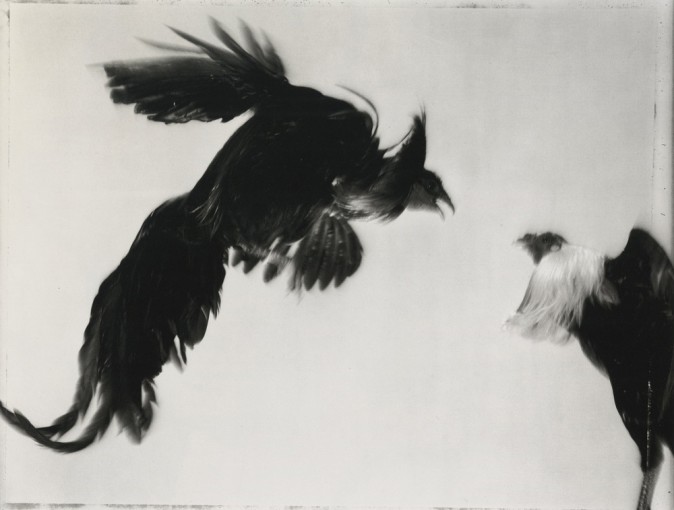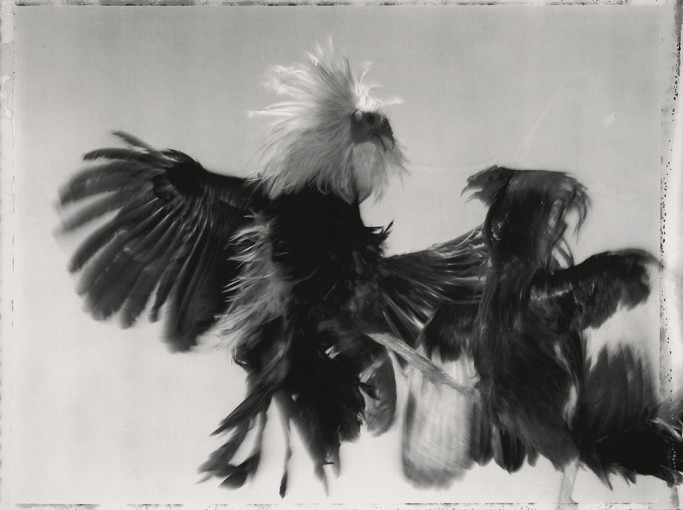‘Fighting Fowl’ started as part of a personal project created alongside photographs of fighting Betta Splendens fish. These photographs, charged with violent movement and emotional tension, reveal Hiro’s genius in discovering beauty in the unexpected.
The ‘Fighting Fowl’ series comprises 26 black and white images photographed in 1981 and 1988. The pictures make an astonishing visual statement of the ferocity of animals, with their simultaneous speed and grace.These images clearly reflect the influence of Asian art in both style and subject matter. Indeed, Susanna Moore compares these images to early Chinese literati paintings and Eighteenth-Century Japanese paintings known as the ‘Kano school’.
Hiro loved exploring the possibility of the extraordinary, embedding his images with surprises, abnormalities and Surrealism. To look at a photograph by Hiro is to come face-to-face with a picture rife with unusual lighting effects, surprising angles, juxtaposing elements and bold colours. Richard Avedon described Hiro as a “visitor all his life”, meaning that Hiro, neither completely Eastern or Western, could document both cultures in his work with a perception that only comes from a certain detachment.







